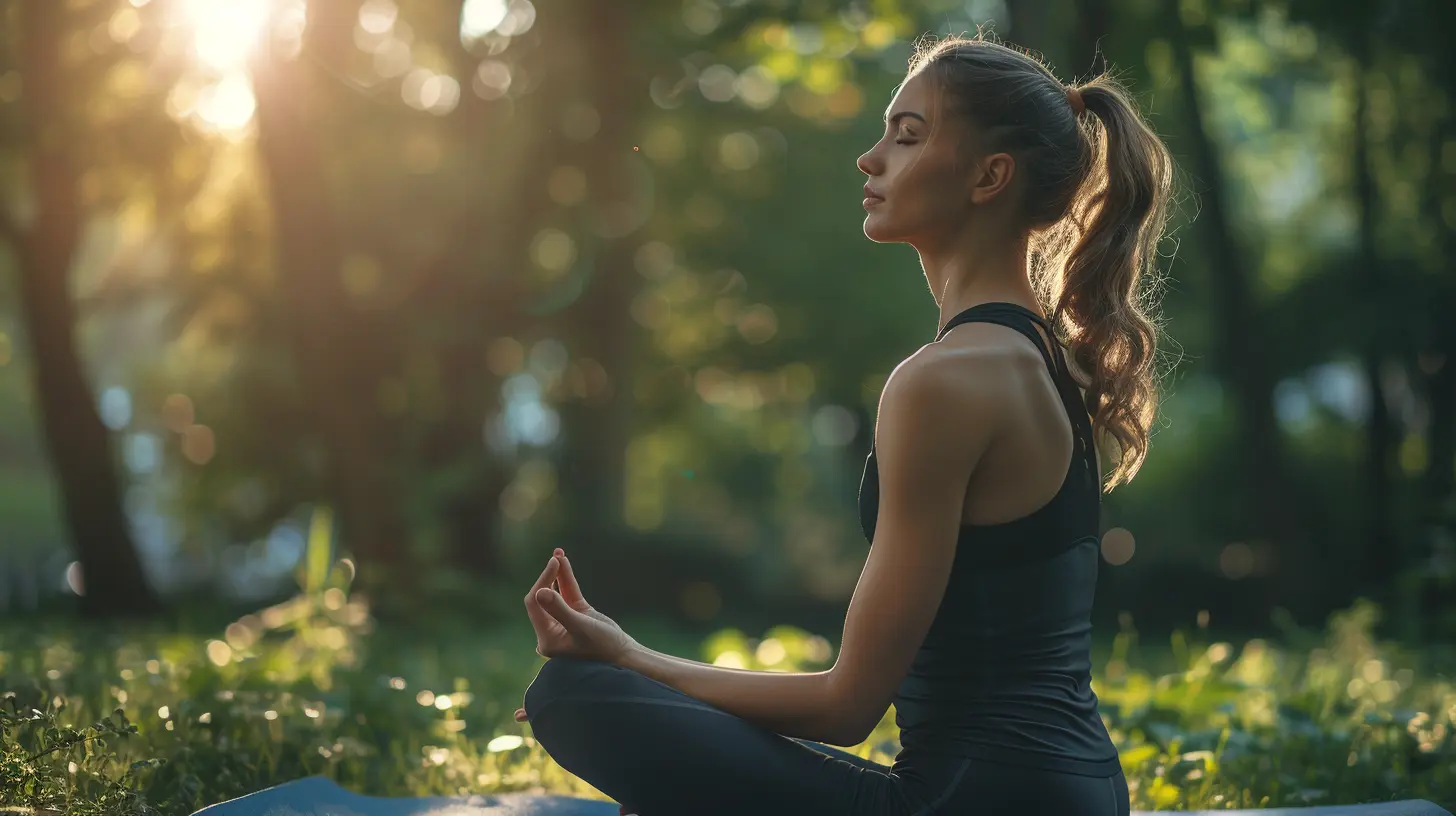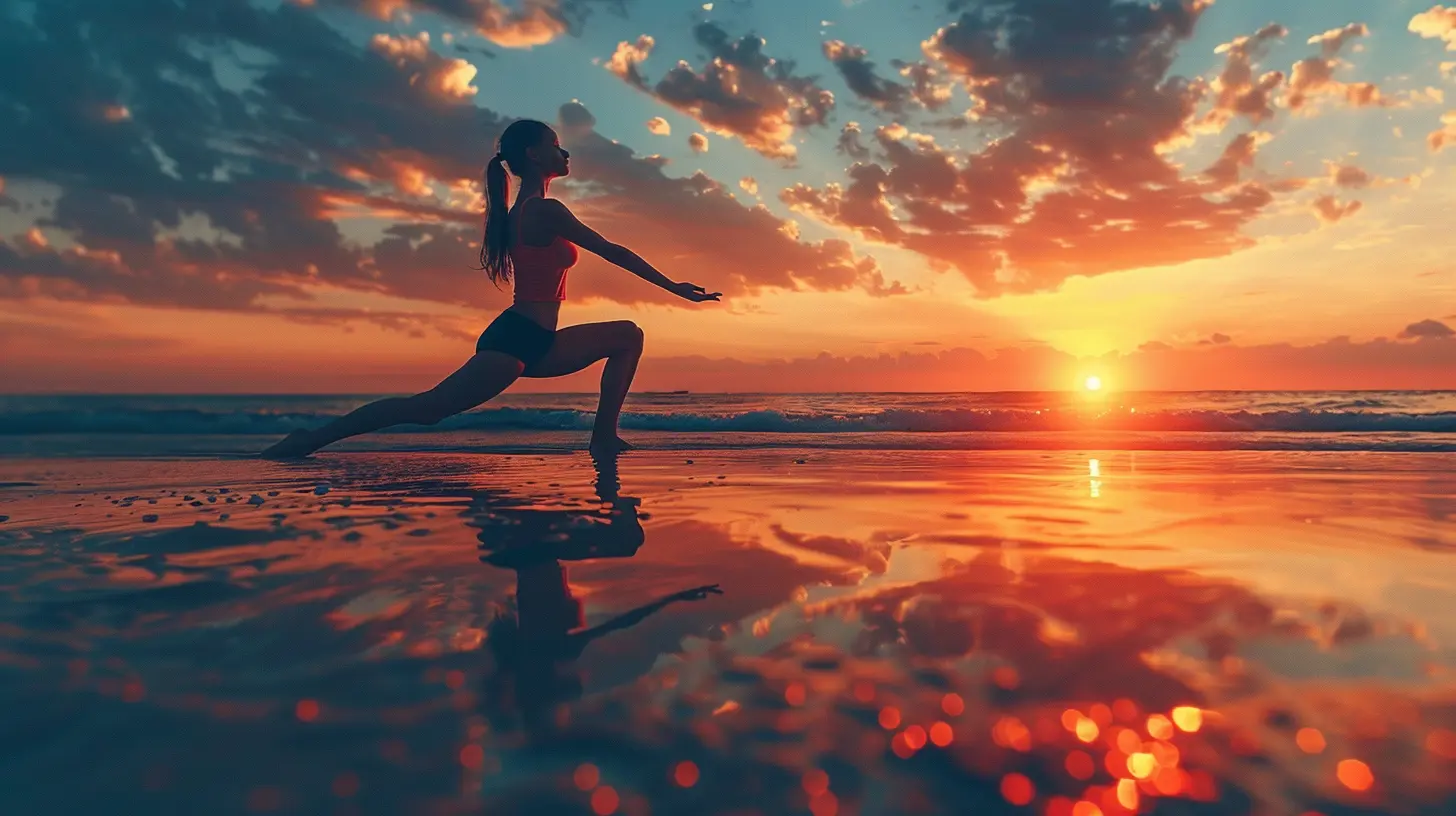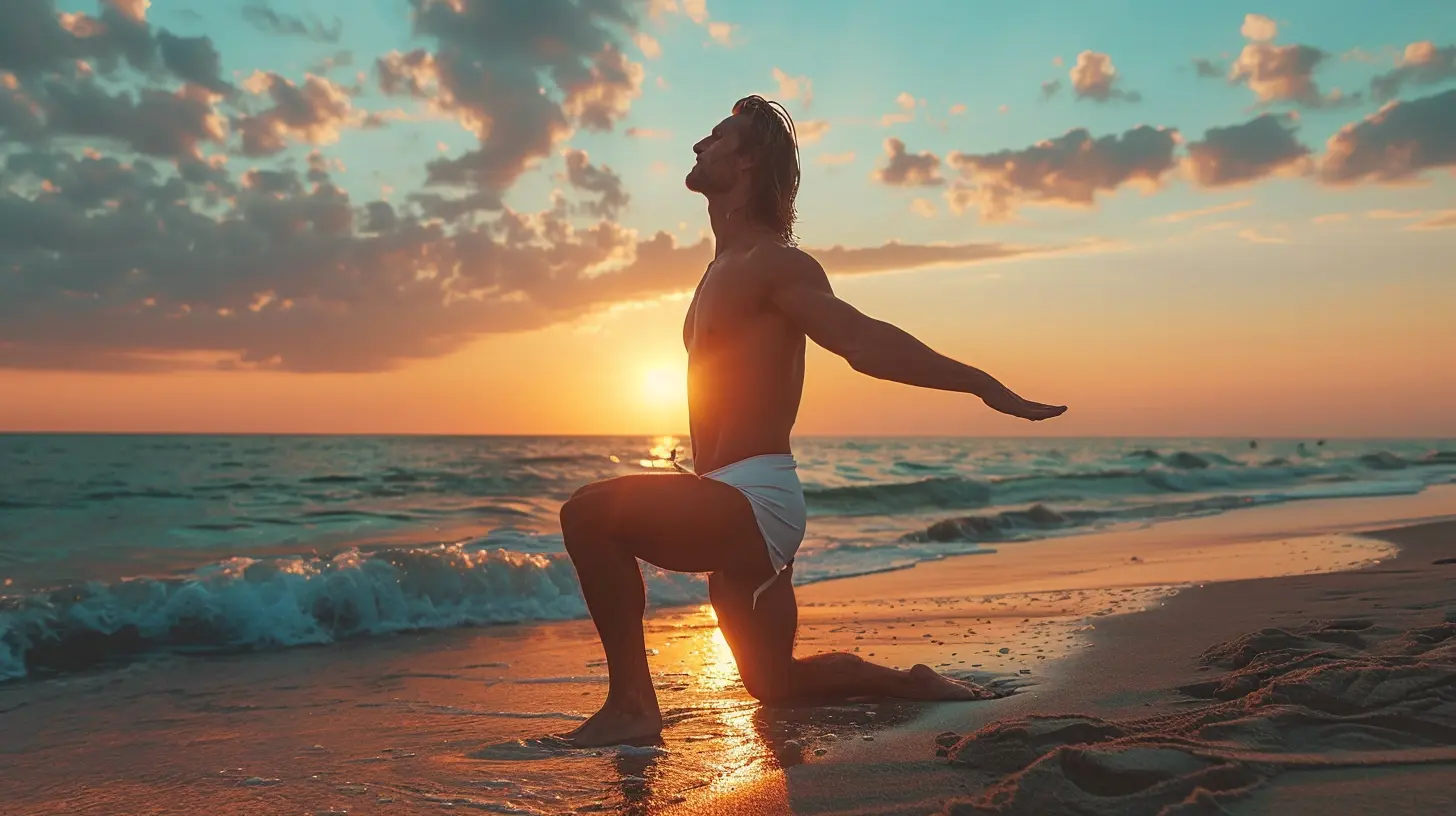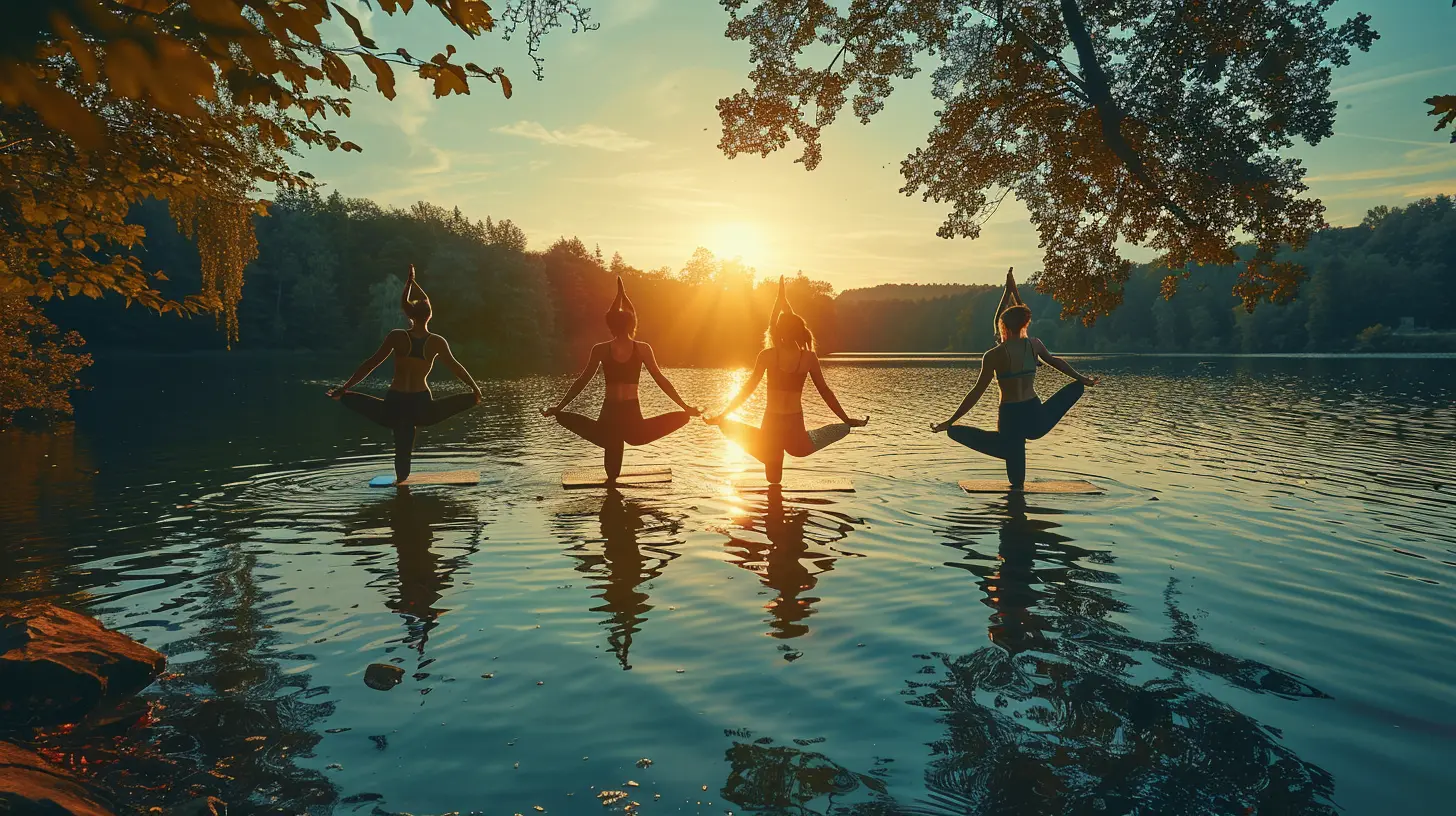The Benefits of Yoga and Stretching for Triathletes
12 January 2025
It’s no secret – triathletes are some of the toughest athletes out there. Swimming, biking, and running back-to-back? That’s no easy feat. But while triathletes often focus on endurance, strength, and cardiovascular fitness, there's one area that often gets overlooked: flexibility and mobility. That's where yoga and stretching come into play.
When you're training for a triathlon, every muscle in your body is working overtime. From your quads to your shoulders, you're pushing your body to the limit. But here's the thing: no matter how strong or fast you are, if your muscles are tight or your joints are stiff, you won’t perform at your best. Worse, you could be setting yourself up for injury.
This is why yoga and stretching should be an integral part of every triathlete’s training regimen. These practices not only help improve flexibility and mobility, but they also aid in recovery, prevent injuries, and even boost mental focus. Let’s dive into the benefits of yoga and stretching for triathletes and why you should add them to your training routine today.

1. Improved Flexibility and Range of Motion
Triathletes typically train in repetitive movements, whether it's swimming, cycling, or running. Over time, this can lead to tight muscles and reduced range of motion. When your muscles are tight, your body has to work harder to perform even basic movements, which affects your overall performance.Yoga and stretching can significantly improve your flexibility and range of motion. The various poses and stretches target different muscle groups, helping to lengthen and loosen them. For example, hamstrings, which often become tight from running, are stretched and lengthened in poses like Downward Dog or Forward Fold.
Think about it: when you’re more flexible, you can swim with longer strokes, pedal more efficiently, and run with a better stride. Increased range of motion means your body can move more freely and with less resistance, which translates to better overall performance.
Key Poses for Flexibility:
- Downward Dog: Targets the hamstrings, calves, and shoulders.- Pigeon Pose: Opens up the hips, which are crucial for running and cycling.
- Cobra Pose: Stretches the chest and strengthens the spine, helping with posture during swimming and biking.

2. Injury Prevention
Stretching and yoga aren’t just about flexibility; they’re also key players in injury prevention. When muscles are tight, they’re more prone to strains and tears. Moreover, repetitive strain from triathlon training can lead to overuse injuries, especially in the knees, hips, and lower back.Regular stretching keeps your muscles supple and reduces the risk of injury. Yoga, with its combination of stretching and strengthening, helps balance out the muscle imbalances that often occur from overtraining. It’s like giving your body a tune-up.
For example, many triathletes suffer from IT Band Syndrome, a common overuse injury that occurs when the iliotibial band (a ligament running along the outside of the thigh) becomes tight and inflamed. Incorporating stretches that target the IT band, such as Reclined Figure Four Pose, can help prevent this painful condition.
Key Stretches for Injury Prevention:
- Reclined Figure Four Pose: Targets the IT band and hips.- Child’s Pose: Releases tension in the lower back.
- Quad Stretch: Loosens tight quadriceps after cycling or running.

3. Better Recovery
Ever finished a tough workout and felt completely wiped out? That’s when recovery becomes crucial. Triathletes often overlook the importance of recovery, but it’s one of the most important aspects of training. Your muscles need time to repair and rebuild, and yoga and stretching can help speed up that process.When you stretch or practice yoga, you increase blood flow to your muscles, which delivers more oxygen and nutrients to them. This helps reduce muscle soreness (aka DOMS – Delayed Onset Muscle Soreness!) and speeds up recovery time. Plus, yoga encourages deep breathing and relaxation, which helps calm the nervous system and promote rest.
Incorporating a gentle yoga session or a stretching routine after a long run or bike ride can make a world of difference in how you feel the next day. You’ll bounce back quicker and feel less sore, allowing you to get back to training without feeling like you’ve been hit by a truck.
Key Poses for Recovery:
- Legs-Up-the-Wall Pose: A restorative pose that helps drain excess fluid from the legs and reduces swelling.- Supine Twist: Helps release tension in the lower back and spine.
- Seated Forward Fold: Stretches the hamstrings and calves, aiding in recovery from running and cycling.

4. Enhanced Mental Focus and Clarity
Training for a triathlon isn’t just physically demanding – it’s mentally challenging too. It requires focus, discipline, and the ability to push through discomfort. This is where yoga’s mindfulness aspect can be a game-changer.Yoga encourages you to focus on your breath and stay present in the moment. This mindfulness practice can help increase mental clarity and focus, which are crucial during races and long training sessions. When you're mentally centered, you're more likely to stay calm under pressure and push through challenging moments.
Moreover, yoga helps reduce stress and anxiety. Let’s face it – the mental strain of preparing for a triathlon can sometimes be overwhelming. The breathing techniques practiced in yoga (such as Pranayama) can help calm the mind and reduce race-day jitters.
Key Poses for Mental Focus:
- Tree Pose: Encourages balance and concentration.- Warrior II Pose: Builds mental strength and focus.
- Corpse Pose (Savasana): Helps the mind relax and reset.
5. Correcting Muscle Imbalances
Triathlon training often leads to muscle imbalances. For example, cycling heavily targets the quads, while running places more emphasis on the hamstrings and calves. Over time, these imbalances can lead to poor posture, inefficient movement patterns, and even injuries.Yoga is a full-body workout that helps balance out these imbalances by engaging muscles that might not get much attention during your regular training. It also emphasizes alignment and proper posture, which can help you move more efficiently in all three disciplines: swimming, biking, and running.
By working on strength and flexibility in underused areas, yoga ensures that your entire body is strong and balanced. It’s like doing maintenance on your car – if one part is off, the whole thing won’t run smoothly.
Key Poses for Correcting Imbalances:
- Warrior I: Strengthens the legs and core, improving stability.- Bridge Pose: Targets the glutes and hamstrings, which often get neglected during cycling.
- Plank Pose: Builds core strength and improves posture, benefiting swimming, cycling, and running.
6. Breathing and Endurance
One of the most underrated aspects of triathlon performance is breathing. Proper breathing improves endurance, reduces fatigue, and helps maintain a steady pace during long races. Yoga, with its emphasis on breath control (also known as Pranayama), can teach you how to breathe more efficiently.In yoga, you learn to synchronize your breath with movement, which can carry over to your triathlon training. For instance, during swimming, learning to control your breath can improve your stroke efficiency. In running, rhythmic breathing helps you maintain a steady pace and conserve energy.
By practicing controlled breathing in yoga, you can develop greater lung capacity and endurance, which will pay off big time during race day.
Key Breathing Techniques for Endurance:
- Ujjayi Breath: A deep, controlled breathing technique that helps with focus and endurance.- Nadi Shodhana (Alternate Nostril Breathing): Balances the breath and calms the nervous system.
- 4-7-8 Breathing: A technique to increase lung capacity and relax the mind.
7. Stress Relief and Relaxation
Let's be honest: training for a triathlon can be stressful. There’s always pressure to perform, hit your target times, and avoid injuries. Plus, life outside of training doesn’t stop – work, family, and other responsibilities are always there.Yoga offers a much-needed mental break from the pressures of training. It’s a time to slow down, connect with your breath, and simply be present. The meditative aspects of yoga can help reduce stress, alleviate anxiety, and improve your overall sense of well-being.
Taking time to relax and unwind is just as important as those hard training sessions. In fact, it can make you a better athlete. A calm, stress-free mind is more focused and resilient when it comes to race day.
Key Poses for Stress Relief:
- Child’s Pose: A calming pose that helps you relax and release tension.- Savasana (Corpse Pose): Encourages deep relaxation and recovery.
- Seated Forward Bend: Helps calm the mind and reduce stress.
Conclusion: Make Yoga and Stretching a Part of Your Routine
If you're a triathlete, don’t underestimate the power of yoga and stretching. These practices offer a wide range of benefits that can improve your performance, prevent injuries, and boost your mental game. Whether you're looking to improve flexibility, recover faster, or simply find some mental peace amidst your intense training, yoga and stretching are essential tools in your arsenal.So next time you finish a long run or a grueling bike ride, take a few minutes to stretch it out or roll out your yoga mat. Your body – and mind – will thank you. And who knows? You might just find that those extra few minutes of stretching make all the difference on race day.
all images in this post were generated using AI tools
Category:
TriathlonAuthor:

Uziel Franco
Discussion
rate this article
17 comments
Jace Lynch
Stretch it out, triathletes! Flexibility fuels victory in every race!
March 26, 2025 at 9:55 PM

Uziel Franco
Absolutely! Flexibility enhances performance and reduces injury risk, making yoga and stretching essential for all triathletes. Keep stretching to stay ahead!
Thea Wilcox
Great article! Embracing yoga and stretching can truly enhance a triathlete's performance and recovery. It's inspiring to see athletes prioritize flexibility and mindfulness—essential components for achieving their goals. Keep up the fantastic work!
February 6, 2025 at 7:50 PM

Uziel Franco
Thank you for your kind words! I’m glad you found the article inspiring—flexibility and mindfulness are indeed game changers for triathletes!
Isabella Nguyen
Mind and body alignment enhances performance and recovery profoundly.
February 1, 2025 at 9:04 PM

Uziel Franco
Absolutely! Mind and body alignment is essential for optimizing performance and recovery, making yoga and stretching invaluable for triathletes.
Daria Middleton
Great insights! Yoga and stretching are essential for triathletes, enhancing flexibility, recovery, and overall performance.
January 27, 2025 at 4:52 AM

Uziel Franco
Thank you! I'm glad you found the insights valuable. Yoga and stretching truly play a crucial role in a triathlete’s training routine.
Samantha McElveen
This article beautifully highlights the transformative power of yoga and stretching for triathletes. Integrating these practices not only enhances physical performance but also fosters mental clarity and resilience. It's a reminder that balance is key to achieving excellence in our sport. Thank you!
January 22, 2025 at 8:50 PM

Uziel Franco
Thank you for your thoughtful comment! I'm glad you found the article insightful and appreciate your emphasis on balance in training. Happy stretching!
Onyx McRae
I'm intrigued by how yoga and stretching can enhance a triathlete's performance! Can you share specific techniques or poses that target common areas of tension? I'm curious about their impact on recovery and injury prevention too!
January 18, 2025 at 8:38 PM

Uziel Franco
Absolutely! Key poses include the Pigeon Pose for hip flexibility, Downward Dog for overall body stretch, and Child's Pose for recovery. These techniques enhance mobility, reduce tension, and improve recovery, ultimately aiding in injury prevention.
Ziva Curry
Unlock your full potential as a triathlete through the power of yoga and stretching! Embrace flexibility, enhance recovery, and cultivate mental resilience. These practices not only elevate your performance but also foster a deep connection with your body. Invest in yourself—your best race is yet to come!
January 17, 2025 at 12:03 PM

Uziel Franco
Absolutely! Yoga and stretching are essential for triathletes, enhancing flexibility, recovery, and mental strength. Investing time in these practices can lead to improved performance and a stronger mind-body connection. Your best race is indeed on the horizon!
Foster McLoughlin
Great insights! Yoga and stretching truly enhance performance and recovery for triathletes!
January 16, 2025 at 8:27 PM

Uziel Franco
Thank you! I'm glad you found the insights valuable. Yoga and stretching are indeed essential for optimizing performance and recovery in triathletes!
Zephyra Rosales
Ah yes, because nothing screams 'I’m ready to conquer a triathlon!' like blissfully bending in a pretzel shape while your competitors are busy swimming, biking, and running. Pure genius!
January 16, 2025 at 5:19 AM

Uziel Franco
I appreciate your humor! Yoga and stretching actually enhance flexibility and recovery, giving triathletes an edge. Balancing both disciplines can lead to better performance!
Vance McIlroy
Great article! Embracing yoga and stretching can be a game changer for triathletes. Not only does it enhance flexibility and recovery, but it also adds a fun twist to your training routine. Stretch it out! 🧘♂️🚴♀️🏊♂️
January 15, 2025 at 12:49 PM

Uziel Franco
Thank you for your kind words! I'm glad you found the article valuable—and I completely agree, yoga and stretching can truly transform a triathlete's training experience! 🧘♀️✨
Rivera Underwood
As a triathlete, I've experienced the profound impact of incorporating yoga and stretching into my training routine. It not only enhances my flexibility but also fosters mental clarity and recovery. This article beautifully captures the essence of how these practices can elevate our performance and overall well-being. Thank you for sharing!
January 15, 2025 at 3:50 AM

Uziel Franco
Thank you for your insights! I'm glad to hear that yoga and stretching have positively influenced your training and well-being. Your experience truly underscores their importance for triathletes.
Patricia McGillivray
Great article! I appreciate how you highlighted the importance of yoga and stretching for triathletes. Incorporating these practices not only enhances flexibility but also promotes mental focus and injury prevention. It’s a valuable reminder for athletes to balance strength training with mindful recovery. Thanks for sharing!
January 14, 2025 at 8:42 PM

Uziel Franco
Thank you for your thoughtful comment! I'm glad you found the article valuable and appreciate your insights on the balance between strength and recovery.
Iliana McGuffey
Yoga and stretching are essential for triathletes, enhancing flexibility, preventing injuries, and promoting recovery. By incorporating these practices into their routine, athletes can improve overall performance and achieve better balance in strength, endurance, and mental focus. A must-try!
January 14, 2025 at 11:55 AM

Uziel Franco
Thank you for your insightful comment! I completely agree—yoga and stretching are vital for triathletes to enhance performance and promote overall well-being.
Dior Parker
In the world of triathlons, where endurance meets precision, an often-overlooked element lurks in the shadows—yoga and stretching. What if the key to unlocking your hidden potential lies in the stillness and flow of these ancient practices? Dive deeper, and discover the secrets that could transform your performance.
January 13, 2025 at 7:39 PM

Uziel Franco
Absolutely! Yoga and stretching enhance flexibility, promote recovery, and improve mental focus, making them essential for every triathlete's training regimen. Embracing these practices can truly unlock hidden potential!
Owyn McCaffrey
Who knew that mastering downward dog could be just as vital for triathletes as conquering the steepest hills? Stretching: because every athlete deserves a little zen between the sweat and the sprints!
January 13, 2025 at 3:30 AM

Uziel Franco
Absolutely! Yoga and stretching play a crucial role in enhancing flexibility, recovery, and mental focus for triathletes, making it an essential complement to training. Enjoy the zen!
Edward Sheppard
Absolutely love this! Yoga and stretching are game-changers for triathletes—boosting flexibility and enhancing performance! 🧘♂️🏊♀️🚴♂️🏃♂️
January 12, 2025 at 1:01 PM

Uziel Franco
Thank you! I'm glad you enjoyed it. Yoga and stretching truly do make a significant difference for triathletes! 🧘♀️✨
Alana Harmon
This article highlights essential benefits of yoga and stretching for triathletes, emphasizing improved flexibility and mental focus. As a triathlete myself, I've found these practices significantly enhance my performance and recovery. Highly recommended!
January 12, 2025 at 5:39 AM

Uziel Franco
Thank you for your feedback! I'm glad to hear that yoga and stretching have positively impacted your performance and recovery as a triathlete. Happy training!
MORE POSTS

The Hall of Fame: A Testament to Perseverance and Skill

How the All-Star Game Changed the Way We View Athlete Endurance

Fueling for Success: Nutrition Tips for Endurance Athletes

The Evolution of Extreme Sports: From Fringe to Mainstream

Skateboard Decks: What Size is Right for You?

Parkour: The Urban Sport That Redefines Limits

Understanding the Different Types of Lacrosse Heads

The Global Impact of All-Star Games on International Sports

How to Build Confidence for Competitive Racing

How to Overcome the Fear of the Open Water in Triathlon

Famous Rugby Comebacks: When Teams Defied the Odds